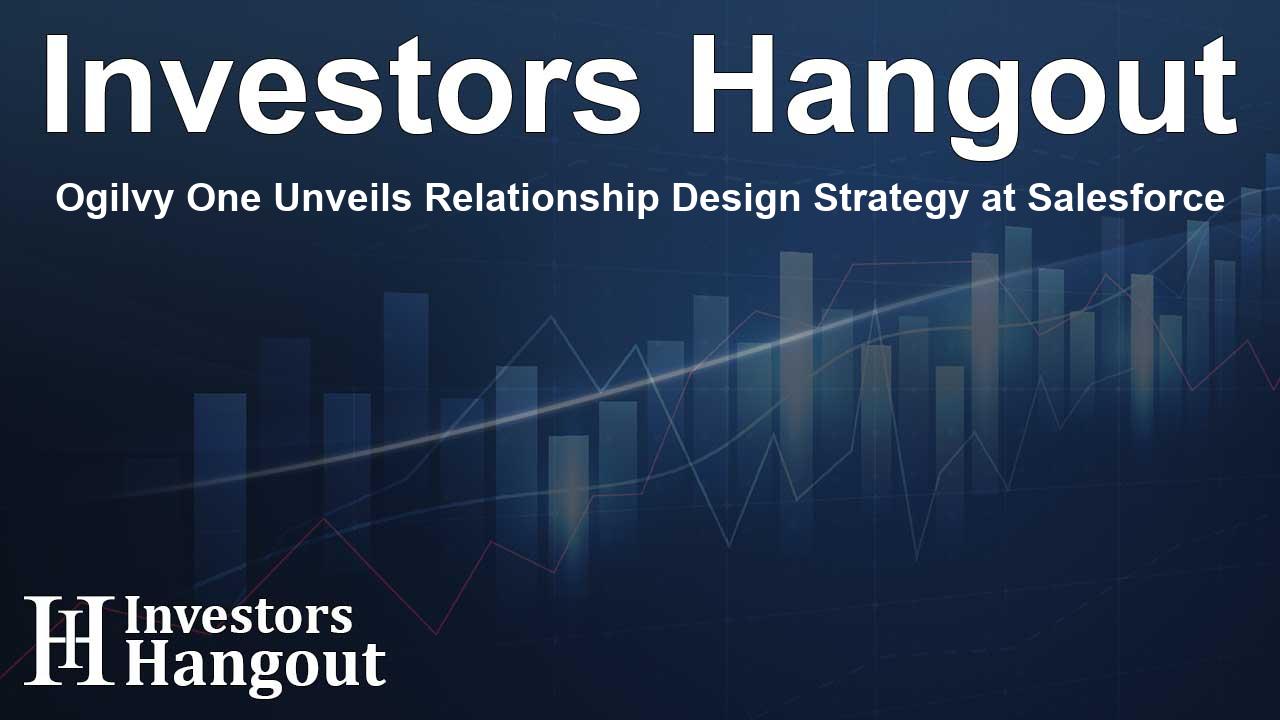Ogilvy One Unveils Relationship Design Strategy at Salesforce

Ogilvy One Introduces the Relationship Design Methodology
Customer engagement keeps shifting, and so do the expectations placed on brands inside the Salesforce ecosystem. In response, Ogilvy One has introduced a practical, repeatable way of working it calls Relationship Design. The approach sits where business strategy, brand expression, customer understanding, and modern technology meet. Its purpose is simple: help clients earn and keep trust at every touchpoint. When applied to enterprise-scale AI programs, it guides teams to use powerful tools without losing the human clarity and care that trust requires.
Trust, by Design
Trust isn’t a nice-to-have; it’s the basis for every productive interaction across a customer’s journey. Ogilvy One’s proprietary Relationship Design framework was built to tackle the real barriers businesses face when they try to build trust with technology—especially with AI platforms such as Data Cloud and Einstein. The framework brings structure to how teams plan, design, and launch experiences so trust is considered upfront, not checked after the fact.
Integrating Technology and Human Insight
“Relationship Design signifies a pivotal shift in how brands engage with their customers,” stated Ab Gaur, Chief Data and Technology Officer at Ogilvy One. The method connects data, technology, and human insight so interactions feel relevant and respectful wherever they happen. In practice, that means using the right data, at the right moment, in a way that reflects the brand’s values and the customer’s needs. Done consistently, it strengthens recognition and deepens loyalty over time.
The Building Blocks of Relationship Design
Relationship Design is a complete way to shape the customer experience. It looks at each decision through four lenses that work together:
- Business: Define the outcomes that matter, size the opportunity, and close competitive gaps with clear metrics and governance.
- Brand: Make the brand’s core values visible in the experience—what you stand for, how you speak, and how you show up in moments that matter.
- Customers: See the whole person, not a profile. Use a multidimensional view to understand contexts, preferences, and constraints.
- Technology and Data: Build an enabling architecture and ecosystem so data flows responsibly and tools can scale with confidence.
Reframing Salesforce Technology Initiatives
Traditionally, trust in Salesforce programs has been tied to reliability, uptime, and solid functionality. Users also look for transparency and a steady track record of support. Those fundamentals still matter. Ogilvy One goes further by grounding implementations in the broader principles of Relationship Design—aligning business intent, brand ethos, and customer insight with the transformation plan. The result is technology that not only works as promised but also communicates clearly, respects the individual, and reflects what the brand believes.
Making AI Memorable—and Trustworthy
When Relationship Design is applied from the start of a Data Cloud transformation, Salesforce clients can build trust in ways that are both innovative and durable. You still deploy best-in-class solutions; you also shape how those solutions are perceived. The framework centers on core trust attributes—credibility, authenticity, and shared values—so the experience feels coherent and honest. It guides teams to use technology in service of the story: clear messaging, genuine storytelling, and thoughtful community engagement that shows, not just tells, how the brand acts.
A Unified Path to Earning Trust
Here’s how the framework can set a Salesforce program up for success across the four lenses:
- Business: Commit to strong data governance, clear policies, and hands-on training so people know how to use AI responsibly—and why it matters.
- Brand: Communicate transparently and make ethical AI principles visible in the experience, which helps customers see the brand’s standards in action.
- Customer: Design personalized moments that respect choice and explain how data is used; transparency invites participation and builds confidence.
- Technology and Data: Develop explainable AI with human oversight, so decisions can be understood, corrected, and improved—enhancing reliability and fairness.
About Ogilvy One
Ogilvy One helps brands, businesses, and customers create value through personalized, data-driven relationships at the intersection of creativity and technology, powered by AI. Relationship Design is the team’s philosophy in action: manage relationships deliberately across every digital and physical touchpoint, not in silos. With a network of more than 4,000 practitioners operating in over 90 markets worldwide, Ogilvy One brings the depth and breadth required to address diverse client needs while keeping trust at the center.
Frequently Asked Questions
What is Ogilvy One’s Relationship Design methodology?
It’s a structured approach that blends data, technology, and human insight so every interaction earns trust. The method helps teams connect business goals, brand values, and customer needs before they design, build, and launch.
How does Relationship Design improve customer engagement?
By aligning strategy and execution. It uses brand values to guide decisions, focuses on the outcomes the business cares about, and applies customer understanding to shape timing, tone, and relevance—leading to stronger engagement and loyalty.
What are the key components of the Relationship Design framework?
Four lenses anchor the work: Business (goals and measures), Brand (values and expression), Customers (a multidimensional view of people), and Technology and Data (an enabling, scalable ecosystem).
How can brands benefit from this methodology in Salesforce programs?
Brands can build trust into their Salesforce initiatives from day one—improving clarity, accountability, and adoption. The outcome is technology that performs well and feels right to customers, which supports better business results.
Where can I learn more about Ogilvy One and Relationship Design?
For additional details, visit Ogilvy One’s official website and explore how the team applies Relationship Design across digital and physical touchpoints.
About The Author
Contact Logan Wright privately here. Or send an email with ATTN: Logan Wright as the subject to contact@investorshangout.com.
About Investors Hangout
Investors Hangout is a leading online stock forum for financial discussion and learning, offering a wide range of free tools and resources. It draws in traders of all levels, who exchange market knowledge, investigate trading tactics, and keep an eye on industry developments in real time. Featuring financial articles, stock message boards, quotes, charts, company profiles, and live news updates. Through cooperative learning and a wealth of informational resources, it helps users from novices creating their first portfolios to experts honing their techniques. Join Investors Hangout today: https://investorshangout.com/
The content of this article is based on factual, publicly available information and does not represent legal, financial, or investment advice. Investors Hangout does not offer financial advice, and the author is not a licensed financial advisor. Consult a qualified advisor before making any financial or investment decisions based on this article. This article should not be considered advice to purchase, sell, or hold any securities or other investments. If any of the material provided here is inaccurate, please contact us for corrections.
